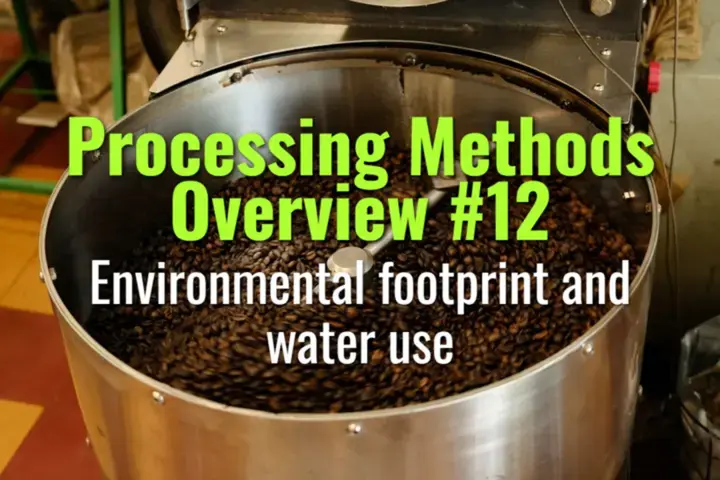Environmental footprint and water use
This topic explores the environmental impacts of different coffee processing methods, focusing on water use, waste management, and strategies to reduce the ecological footprint of processing.
- Coffee Basics Nerds
- 2 min read
Article 12 of 12 in Processing Methods Overview/

Why Environmental Footprint Matters
- Coffee processing generates significant water demand and organic waste.
- Without proper management, wastewater and pulp disposal can pollute rivers and soils.
- Increasingly, consumers and buyers demand environmentally responsible practices.
Water Use in Processing Methods
- Washed processing: Highest water use (20–60 liters per kg of parchment).
- Natural processing: Minimal water use, but requires dry climate.
- Honey/pulped natural: Moderate water use, less than fully washed.
- Eco-pulpers: New machines reduce water use by up to 90% compared to traditional washing channels.
Environmental Risks
- Wastewater (effluent): High in organic matter (BOD/COD), lowers oxygen in rivers, killing aquatic life.
- Coffee pulp: If dumped untreated, ferments and contaminates soil and water.
- Energy use: Mechanical dryers and pulpers increase carbon footprint.
- Deforestation risk: Some farms clear shade trees to speed up drying, reducing biodiversity.
Strategies to Reduce Footprint
- Water Conservation:
- Use eco-pulpers and recirculation systems.
- Harvest rainwater for processing.
- Wastewater Treatment:
- Sedimentation ponds, filters, and anaerobic digestion.
- Constructed wetlands for natural filtration.
- Coffee Pulp Management:
- Composting into organic fertilizer.
- Biogas production from pulp.
- Animal feed in some regions.
- Energy Efficiency:
- Solar dryers to reduce fuel use.
- Efficient machinery with lower electricity demand.
- Certification Incentives:
- Rainforest Alliance, Organic, and Fairtrade encourage eco-friendly processing.
Regional Examples
- Colombia & Central America: Shifting to eco-pulpers to save water.
- Brazil: Natural and pulped natural processing minimizes water demand.
- Indonesia: Challenges in wastewater management due to wet-hulling practices.
Lasting Importance
Reducing the environmental footprint of coffee processing is vital for sustainability, compliance, and market access. Water-efficient methods, waste recycling, and clean energy solutions allow coffee producers to protect ecosystems while producing high-quality coffee for environmentally conscious consumers.
You might also like:
- Tags:
- Lasting Importance
- High Quality
- Matters Coffee
- Organic Matter
- Rainforest Alliance
- Natural Processing
- Central America
- Solar Dryers
- Quality Coffee
- Shade Trees
- Organic Fairtrade
- Mechanical Dryers
- Washed Processing
- Pulped Natural
- Eco Friendly
- Coffee Processing
- Processing Methods
- Buyers Demand
- Market Access
- Honey Pulped
- Eco Pulpers
- Energy Efficiency
- Environmental Footprint
- Carbon Footprint
- Water Conservation
- Washing Channels